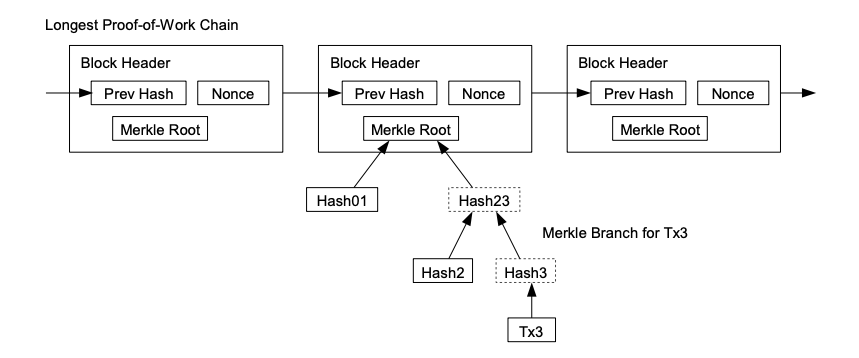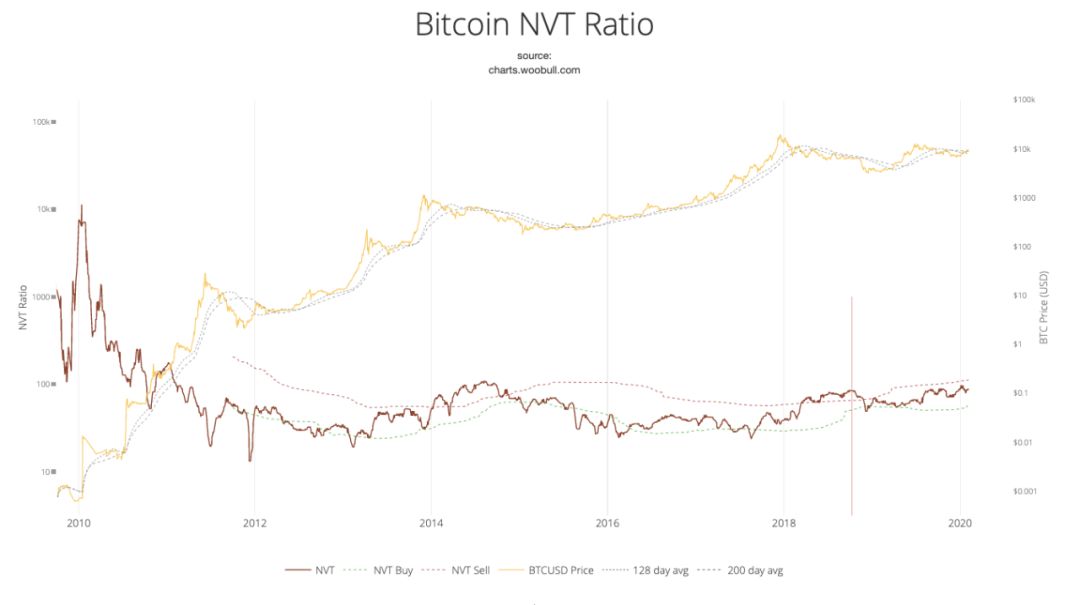Analysis: Bitcoin and its value growth logic for bull market entry
Prologue: Satoshi Nakamoto
A nation has a group of people who look up at the stars, and they have hope.
-Hegel
Beginning in 2020, in addition to the outbreak of the new crown virus epidemic, Tesla, founded by Elon Musk, has also made eyebrows in the financial market. Its stock price has risen from a stage low of around $ 190 and soared to a few months. About 970 US dollars, set off a heated discussion in the financial market. The fierce rise of Tesla's stock has also been compared by many media with the Bitcoin price trend in 2017, and the founders of both are worthy of the most dazzling stars in their respective professional fields.
- Industry Blockchain Highlights: Central No. 1 File Named Blockchain Central Bank Trade Gold Blockchain Platform Business Volume Exceeds 90 Billion
- Perspectives | Two Sides of Ethereum
- Mining mystery: when halving prices encounter epidemics

Tesla (NASDAQ: TSLA) and Bitcoin Price Trends MarketWatch
Regardless of how the market is performing, the success of Tesla and Bitcoin in the capital market will undoubtedly give a strong footnote to its value. Especially for the latter, although its founder Satoshi Nakamoto disappeared from the public eye shortly after the creation of the project, bitcoin began to be bought for pizza for the first time after its birth in 2008 with an exchange price (about 0.0025 USD). By 2017, the peak of the big bull market (up to more than 19,000 US dollars), an increase of more than 7.6 million times, has still maintained an increase of about 3.81 million times. However, to this day, most people still don't know anything about Bitcoin after a million-fold increase, calling it "the new tulip bubble" or "rat poison." In 2020, the third halving tide of Bitcoin is coming, and Bitcoin is going further and further on the road of shouldering or even surpassing gold. Looking back on history, we can find that although Bitcoin has created many myths about freedom of wealth, it is far more than a simple wealth-making machine. Bitcoin not only bears Satoshi Nakamoto's original ambitions: the first peer-to-peer electronic cash system that can complete global payments without going through an intermediate financial institution, it has also become an emerging asset class that cannot be ignored and will soon stand in the history The big stage welcomes the pursuit of capital from all over the world.
Bitcoin behind a million-fold increase
So, behind the million-fold increase in ten years, what exactly is Bitcoin? Is it really a "tulip bubble" that will eventually burst, or is it a new thing that subverts the thinking inertia and cognitive framework of most people?
1. The first truly global peer-to-peer electronic cash payment system
● Peer-to-peer: When using Bitcoin for payment, although through the network, both parties to the transaction can complete the entire payment and ownership transfer process without the help of any intermediate financial institution (such as Alipay or a bank), that is, P2P payment (person-to-person, Peer To Peer);
● Global payment: In theory, the two parties that can complete the transmission of information, regardless of where they are on the planet, only need to be able to access the Bitcoin network at the same time to be able to perform payment transfers. In fact, if future interstellar exploration enters practical development, we can even complete Bitcoin payments across the planet or even galaxies through network forwarding facilities located in the universe (such as the Moon) or on Earth.
It can be found from the basic attributes of Bitcoin that this is a new payment method that is fully matched with the contemporary global Internet, making up for the lack of the function that the Internet can only complete the point-to-point transmission of information, but not the point-to-point value transfer.

Bitcoin's blockchain block structure
2. Continuously evolved distributed open source platform
Bitcoin inherits the excellent characteristics of open source software, allowing the community to upgrade and transform it through the form of forks. So far, the more well-known Bitcoin forks include Bitcoin Cash (BCH, forked from Bitcoin) and BSV (forked by Bitcoin Cash). Through open source code and a method that allows forking, Bitcoin can achieve rapid evolution, and at the same time, it can explore possible development directions as much as possible, such as reducing block data size through segregated witness, or increasing transactions through large block capacity. Processing capacity, etc. However, this mechanism also has no regulations to avoid malicious bifurcation, and to some extent, there will be a risk of splitting the core community. A typical case is a hard division conducted by the camp represented by Wu Jihan and Satoshi Omoto of Bitmain. Fork and hash war events. The main fork events in Bitcoin history are shown below.

Bitcoin Fork History Map BlockVC Research and bitcoinmagazine
3. The world's most successful decentralized economic system
Bitcoin is by far one of the most successful decentralized economic autonomous systems in the true sense. Generally speaking, with the success of the project, its core leaders often have difficulty in making the project truly decentralized due to too strong influence. However, Bitcoin is unique in that its founder belongs to a crypto-punk who pays great attention to privacy. He quietly retreated after an anonymous issue and actively promoted the bitcoin project's great success, thus actively completing the most important part of the project. The self-dissolution of the "supernodes" also prompted Bitcoin to operate in a decentralized form. As of now, Bitcoin has been working safely and normally for more than 10 years through this method, which is a miracle.
At present, the Bitcoin system is mainly composed of 3 types of members, namely miners, developers, and users, of which:
● Miners are responsible for the verification, packaging, and broadcasting of the entire network transaction, and receive block rewards. Due to the centralized management of production links, the miner group has gradually formed a miner interest group represented by Bitmain;
● Developers, developers mostly collaborate in a distributed manner, mainly maintaining and researching bitcoin code. Most of the core developers are early players of bitcoin, and they also hold a lot of bitcoin;
● Users who use Bitcoin system functions and conduct transactions and transfers through Bitcoin. In order to serve the large bitcoin user community, a complete industrial chain with exchanges as its core has been formed, including wallets and browsers.
From the perspective of the Bitcoin network's node distribution, it is mainly distributed in North America, Europe and East Asia, with a total of 10591 nodes, of which the US node accounts for more than 20%. Although Bitcoin has formed a loosely coupled decentralized organization through its basic network mechanism (POW consensus mining), over time, the three major groups have formed a mining pool and core because of the gradual concentration of resources. The "three-legged stand" pattern with development members and three major organizations of the exchange as the core. This increasingly centralized trend poses potential threats to the security of Bitcoin, such as collusion attacks by interest groups.

Global distribution map of Bitcoin network nodes
4. A brand new asset class: crypto assets
In 2017, the world-renowned compliance exchange Coinbase and ARK Invest published a research report by comparing the relevant data of Bitcoin with traditional assets (such as S & P 500, U.S. bonds, gold, U.S. real estate, crude oil, etc.) Found that Bitcoin is becoming an emerging asset class.

Correlation coefficient between Bitcoin and traditional assets Coinbase & ARK Invest
In addition, the research report assumes that the US $ 1,000 investment in the last three years (2013.12-2016.12) has invested in various major product categories. By comparison of Sharpe ratios, it is found that except for US securities / bonds / real estate which has a 3-year investment in Bitcoin Besides being better, the return on investment of Bitcoin is much better than that of other assets.

Sharpe ratio of Bitcoin to traditional assets Coinbase & ARK Invest
● Electronic cash (2009-2016)
● An antidote to the existing financial system (2010-2017)
● Alternative payment system (2010-2017)
● New fundraising mechanism (2015-2018)
● Value storage: the candidate of gold (2017-2018)
● Sanctuary for collapsed fiat currencies (Spring-Summer 2018)
Obviously, from the above research, it can be found that the functions and value connotations carried by Bitcoin have evolved spontaneously with changes in the world economy and local regional conditions. At the same time, multiple value connotations may be superimposed, and these value connotations will also follow Change with time or events. For example, in the context of the sharp devaluation of Venezuelan and Turkish fiat currencies, Bitcoin has served as a refuge for the collapse of fiat currencies in the region, and has gained widespread popularity. In addition, in the event of a local war, Bitcoin will also act as a temporary refuge for assets.

"Rapidly morphing thesis" by Morgan Stanley Morgan Stanley
Bitcoin valuation model / reference indicator
The Times 03 / Jan / 2009, Chancellor on brink of second bailout for banks.
-Satoshi Nakamoto wrote on the Bitcoin Genesis Block on January 3, 2009
● Bitcoin can only be generated through block rewards obtained through participation in "mining" through the POW consensus;
● The total amount of Bitcoin does not exceed 21 million, and the initial block reward is 50 BTC, which is halved about every four years.
Bitcoin valuation model / reference indicator
Since Bitcoin is a new type of asset investment category, how to reasonably value Bitcoin has become a key issue. Because Bitcoin has no cash flow, it is not suitable for DCF valuation. So how to predict the price trend of Bitcoin to provide a reliable reference for investment behavior? In view of this, there are many Bitcoin valuation models / reference indicators on the market, but most valuation models have an unavoidable scope of failure. This article will briefly introduce some valuation models / reference indicators.
The NVT model (Network Value to Transactions Ratio) is analogous to the traditional P / E model, which refers to the ratio of Bitcoin network value to the number of transfers on the chain. This model follows the original design of Bitcoin and regards it as a pure payment network as a reference. True value. If NVT is at a high level, it means that the price in the entire Bitcoin network is in an unsustainable bubble or investors are extremely optimistic about Bitcoin and increase to hold positions. Because the model ignores the fact that Bitcoin's current largest application scenario is transactions rather than payments, and most of the transactions occur in centralized exchanges without leaving corresponding on-chain transfer records, the model only Can be used as a reference indicator for extreme prices.

Bitcoin's NVT model Woobull.com
The Bitcoin Difficulty Ribbon Index of the Bitcoin network is the Bitcoin Difficulty Ribbon. The difficulty band is composed of a simple moving average of the Bitcoin network difficulty, which shows the impact of miners' selling pressure on the price of Bitcoin. Generally speaking, for the needs of daily operations, miners will sell a certain percentage of newly mined bitcoins for income. When the climbing slope of the entire network difficulty zone decreases and overlaps, most miners are already off, and only strong miners will insist on participating in mining. Due to the strong financial strength of strong miners, only a small proportion of bitcoins need to be sold to maintain operations, which will reduce the bitcoin selling pressure in the market, thereby providing more room for price increases. Therefore, according to the index, areas where the mining difficulty zone shrinks or even overlaps will be the best time for bitcoin to open a position (as shown below, the blue line is the market value of bitcoin, the red line is the difficulty moving average of different time spans, and the vertical red dotted line (Half the time for Bitcoin), at this time, it means that most miners have stopped, the time has entered the end of the mining disaster / the end of the bear market, and the currency price may bottom out.

Bitcoin mining difficulty with Woobull.com
The Bitcoin Scarcity Index S & F is a method for assessing the scarcity of assets / commodities, which represents the ratio between the number of goods in stock and the annual production volume. Scarcity is also an important consideration when Satoshi Nakamoto formulated the Bitcoin economic model. For a long time, gold has consistently ranked at the top of the scarcity index S & F. According to a research report "Megatrend Digitalisation: Is Bitcoin outshining gold?" Released by Bayern LB Research at the end of September 2019, the S & F index of gold was as high as 58, while The S & F is about 25.8, but after the third halving in May 2020, the scarcity of Bitcoin will further increase. The S & F index will reach 53, indicating that Bitcoin is surging on the road to surpass gold scarcity . According to the S & F index, Bitcoin's halving behavior will significantly increase the scarcity of Bitcoin. According to historical experience, the market value of commodities is positively correlated with scarcity, that is, the higher the commodity scarcity index, the larger the market value.

Bitcoin Scarcity S & F Index Bayern LB Research
Bitcoin Market Cap Accelerator: Halved
According to the historical data of Bitcoin, halving the market is an important driving factor for the soaring market value of Bitcoin, which can be called Bitcoin's "market value accelerator". It can be seen from the S & F index that halving Bitcoin will significantly increase its scarcity, and it will also greatly promote the growth of Bitcoin market value. As of now, Bitcoin has been halved twice. In November 2012 and July 2016, the Bitcoin block reward was reduced from the original 50BTC to the current 12.5BTC, which has achieved 7976% and 2902% respectively. Price increases. It is expected that the third halving of Bitcoin will be at a block height of 630,000 (approximately May 13, 2020). After this halving, the block reward will be reduced to 6.25 BTC.

Bitcoin's market performance before and after halving Fitzner Blockchain
In fact, Litecoin (LTC), which always acts as the "test chain" and "test field" of bitcoin, has achieved an increase of about 594% in the halving market in 2019. . Recently, the well-known rating agency Weiss Crypto Rating rated Bitcoin's technology and market popularity as A, and the overall rating was upgraded to A- . It is believed that Bitcoin will easily break the historical high in this round of halving, after surpassing $ 20,000 Will enter a historic growth space.

Weiss Crypto Rating
As recently announced by BlockVC, the strategy research titled "Half quotation has just warmed up, and February came back to see the climax":
"Bitcoin has actually come out of a clear bottom box shape. While Bitcoin is moving sideways, BCH / BSV / ETC and other halving leading currencies have simultaneously stepped out of the rising rising shape at the bottom. The fiery start is basically on the eve of a flash. "
Conclusion
Throughout the history of bitcoin, it just confirms the sentence: Whoever can't kill will certainly make it stronger. At present, the blockchain technology represented by Bitcoin has been researched and promoted by mainstream society around the world including the Chinese government. The halving mechanism will become an "accelerator" and "catalyst" for bitcoin scarcity and soaring market value. Just as the width of the ancient Roman warhorse's buttocks ultimately determined the width of the American Space Shuttle rocket booster, Bitcoin happens to serve as the path entry point for the real world to embrace the blockchain. Therefore, the significance of Bitcoin has already surpassed the pure crypto assets themselves, not only provides a global payment means and absolute control of crypto assets, but also brings a new global financial infrastructure. The possibility and the dawn of upgrading the Internet to the Internet of Global Value.
References:
1.https: //bitcoin.org/bitcoin.pdf
2.https: //nakamotoinstitute.org/literature
3.Bitcoin Ringing the Bell for A New Asset Class, Coinbase & ARK Invest
4. Update: Bitcoin, Cryptocurrencies and Blockchain, Morgan Stanley
5. Megatrend Digitalisation: Is Bitcoin outshining gold ?, Bayern LB Research
6. Will Bitcoin be a harder asset than gold? About value, scarcity, and S2F, NPC source plans
We will continue to update Blocking; if you have any questions or suggestions, please contact us!
Was this article helpful?
93 out of 132 found this helpful
Related articles
- Blockchain under the epidemic: inefficient and predictable future
- Weekly development of listed companies' blockchain business: In the first week of market opening, 5 companies invested in blockchain business
- Morgan Creek founder Pomp: Limited supply and increased demand will bring Bitcoin to $ 100,000 by the end of 2021
- "Secret History of Bitcoin" (7): What is the Bitcoin Alert System?
- The biggest public enemy of the "epidemic"-trust, to overcome its most effective weapon-blockchain
- Observation | Fed: Central Bank's Digital Currency Research and Policy Development Leading the Way
- Nearly halved, Wechsler Ratings raises Bitcoin rating to A-






